

BOMBARDIER Q400, DHC-8-400 MODIFICATIONS (28)
Introduction of ADS-B Out as per CS-ACNS
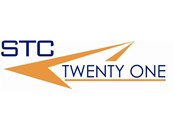
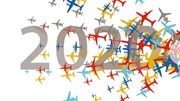
Automatic Dependent Surveillance-Broadcast (ADS-B) is a system broadcasting, without the need for action from the pilot or any request from ATC, that provides an enhanced set of aircraft surveillance data to Air Traffic Management (and potentially to other airplanes)
ADS-B Out
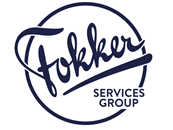

Automatic Dependent Surveillance-Broadcast or ADS-B Out as it is known, is a new Air Traffic Control technique for aircraft in both Non-Radar and Radar Airspace. Guiding aircraft to their destination in a safer more efficient way.
ADS-B is a means by which aircraft, aerodrome vehicles and other objects can automatically transmit and receive data. Identifying themselves and their position via a data-link. This user friendly broadcast mode keeps communication lines open, informing people on the ground and in the air of real time developments. ADS-B out is the first step and will only send data from the aircraft.
Non-reliant on external input the ADS-B Out is automatic, depending solely on existing on-board transmission services to provide surveillance information to other users.
To view the ADS-B Out Webpage, please check: https://www.fokkerservices.com/services/aircraft-modifications/ads-b-out
Underwater Locator Device - ULD - Fokker Services


Events related to aircraft missing over oceanic areas have led to several new requirements, amongst which is the introduction of a long-range Underwater Locator Device (ULD).
The ULD low frequency (8.8kHz) technology is used to increase the range at which aircraft submerged wreckage can be located.
It will be mounted on the aircraft structure free of sound absorbent materials and not in wing sections or empennage. The installation is in accordance with ARINC specification 667, which describes the removal, installation and maintenance aspects of an ULD installation.
Note that the ULD is not to be confused with the Underwater Locator Beacons (ULB) as installed on the CVR and FDRs. The ULD is complementary to the ULB and is mounted to the aircraft structure.
ICAO states that by January 1st 2018 aircrafts flying long range over water with a MTOW>27.000 kg must be equipped with an ULD. Long range over water is determined by the exceedance of the distance from a suitable emergency landing spot. The distance corresponds to 120 min at cruise speed or 400NM whichever is the lesser.
EASA states that by January 1st 2019 Passenger aircraft flying long range over water with a MTOW>27.000 kg and cargo aircraft with MTOW > 45.500kg must be equipped with an ULD. Long range over water is determined by a distance >180 NM from shore.
CARS 121 MOS 11.64 states that aircraft with a MTOW>27.000 kg carrying a life raft should have an ULD by December 2, 2023.
Other authorities have accepted similar rules.
Contact Fokker Services for other aircaft types.
EFB Solution for iPad® (EASA and FAA Certified)

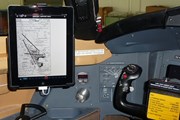
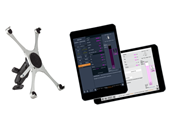
FAA: ST03700NYEASA: 10046185FAA STC EFB 737 ST03939NY
Fokker Services has joined forces with Navtech, Jepessen and Dynamicsource AB, leading providers of flight operations solutions, and developed an EFB solution for iPad® installation that may revolutionize the way we navigate our skies. Technology moves quickly, and at Fokker Services it is our policy to stay ahead of the game. We design and launch more than 300 aircraft modifications every year, believing that even an already functioning product can be improved on. In recent years Apple has captured the hearts of the consumer with their innovative thinking, whilst Navtech represent quality and credibility within the aviation industry. Combined with the history and experience at Fokker, the development of such an innovative yet simple solution felt like a natural progression. Service providers today are under a lot of pressure to meet growing demands. Products must be efficient, safe, cost effective, user and environmentally friendly; Our EFB installation is ticking all the boxes and is available for most aircraft types, including Airbus, Boeing, ATR, Bombardier Challenger & CRJ Family, Embraer, Fokker and others.
Over 1300 installations and upgrades have been ordered
Traffic alert and Collision Avoidance System (TCAS) 7.1



The Traffic alert and Collision Avoidance System (TCAS) has been introduced in order to reduce the risk of mid-air collisions or near mid-air collisions between aircraft. When TCAS II version 7.1 is implemented the probability of mid-air collisions will be reduced significantly. *
The introduction of TCAS change 7.1 software is available for Fokker 50, Fokker 70 and Fokker 100 aircraft as well as for other types of aircraft like Airbus A318, A319, A320, A321, Boeing 737 series, 757, 767, Bombardier Dash 8 and CRJ. (* source: www.eurocontrol.int)
Dual transponder system ADS-B upgrade

Dual transponder system ADS-B upgrade in Part 25 aircraft
Provisions for a Class 2 Electronic Flight Bag (EFB)

Provisions for a Class 2 Electronic Flight Bag (EFB) for Bombardier DHC-8
Installation of Electronic Flight Bag (EFB) provisions and XM Weather...

Installation of Electronic Flight Bag (EFB) provisions and XM Weather Receiver.
Installation New Equipment on Bombardier DHC-6
New Equipment Installed: - ISAT-100 Unit (GPS Receiver and IRIDIUM Transceiver) - IRIDIUM/ GPS Combi Antenna - DVI Display Voice Interface mounted on the Cockpit Pedestal - CDP Cockpit Display Panel mounted in the Cockpit Pedestal Modification concerns D
Installation of Micro-QAR Recorder (for DHC-8 / 400 series)
Micro Quick Access Recorder (µQAR) is designed for use in commercial and military aircraft operating with solid-state flight recording systems.
The instrument’s unique features include a very light structure (6 oz./170 g) with a fixed or removable Compact Flash (CF) memory card and a standard USB 2.0 interface for optional downloads.

